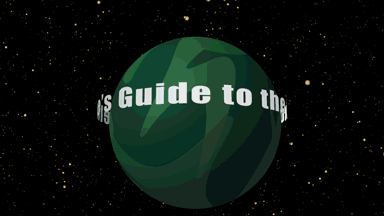Scienceline’s Guide to the Exoplanets: The Island
Kepler-37b: A window into a world we can't yet see
Rahul Rao • October 5, 2020

Your favorite planets, and you didn't even know they existed. [Credit: Curtis Segarra | CC BY-NC-ND 2.0]
The Island
Kepler-37b
Discovered by: Kepler
Discovered: 2013
Distance from Earth: ~209 light-years
Mass: ~0.35 Earth masses
Radius: ~0.01 Earth radii
Surface climate: Roasting
Habitability from humans: No, but that’s not the point
Today, we’re travelling a few hundred light years in the direction of the constellation Lyra. Our destination orbits Kepler-37, a humble star not entirely unlike the Sun, if a little cooler and somewhat older. In short, it’s a fairly unremarkable star in a fairly unremarkable part of the Milky Way.
So far, scientists have discovered a total of four fairly unremarkable planets orbiting Kepler-37. All four of them are quite close to their sun; were they in our Solar System, all four of them would orbit closer than Mercury. Today, we’ll focus on the innermost of those planets: Kepler-37b.
Were Kepler-37b in our solar system, it would be, indeed, fairly unremarkable. It’s quite a small world, with a radius comparable to Earth’s Moon. Its mass isn’t known, but it’s not likely to be much larger than a lunar mass. Perhaps we’d talk about how searing-hot it is: it orbits at less than ten million miles, or around one-third the distance from the Sun to Mercury.
But it’s precisely how small and humble Kepler-37b is that makes the planet remarkable.
When it was discovered, Kepler-37b was the smallest exoplanet then known. Although subsequently discovered planets such as the asteroid-sized SDSS J1228+1040 b and the disintegrating WD 1145+017 b, both of which orbit white dwarfs, are thought to be smaller in size, Kepler-37b remains notable. As far as scientists know, it’s still the smallest known planet orbiting a main-sequence star.
Thinking about Kepler-37b also raises a somewhat obvious question: how many similar small planets don’t we see?
For much of recent history, the majority of discovered planets were large and close to their stars — hot Jupiters, for instance. That’s perhaps obvious, especially when you think about how much easier it is to find planets when they’re larger and in place to pull and push at their star more, or block out more of their star’s light. Furthermore, when you look at the ranks of stars known to have exoplanets, many of those systems only have one or two discovered planets — other, smaller ones might be hiding in their midst.
Missions such as Kepler are changing exoplanet searchers, allowing scientists to start peeling the shadows away from whole ranks of Earth-sized planets. But, even in our solar system, the vast majority of objects are much smaller than Earth. Those include asteroids and Kuiper Belt objects — and moons, even those such as Europa and Titan, where scientists can go wild speculating about life.
So it’s not inconceivable that Kepler-37b might indeed be far more representative of what lies around other stars than the bulk of planets we know.